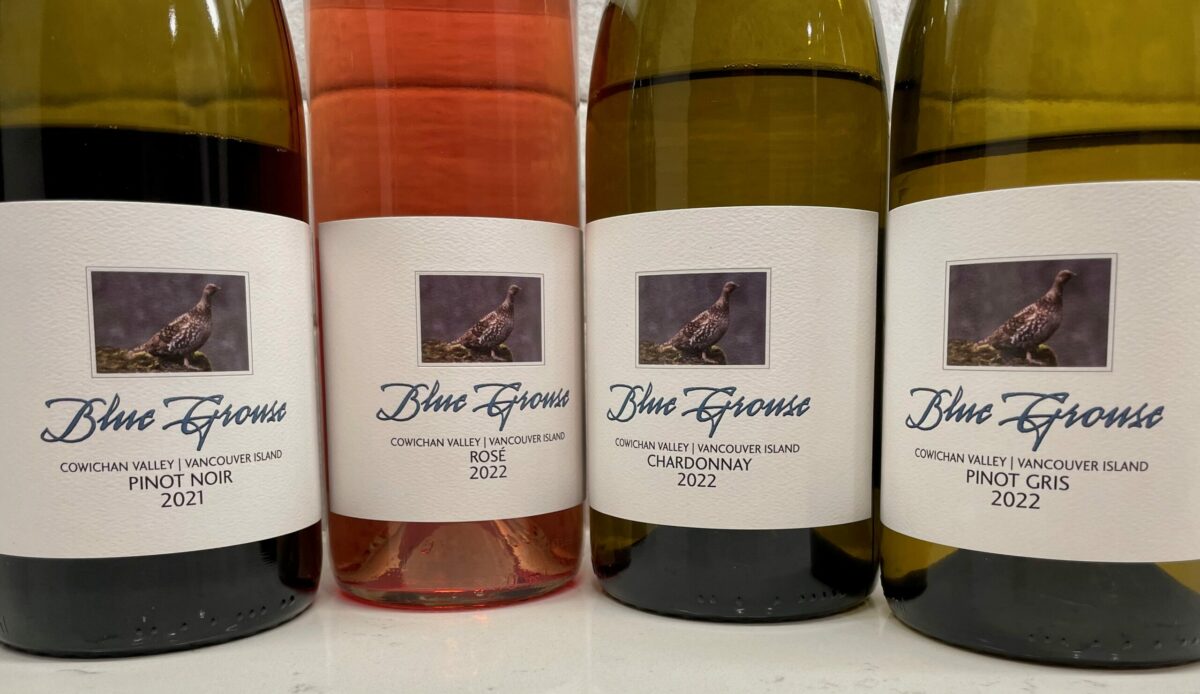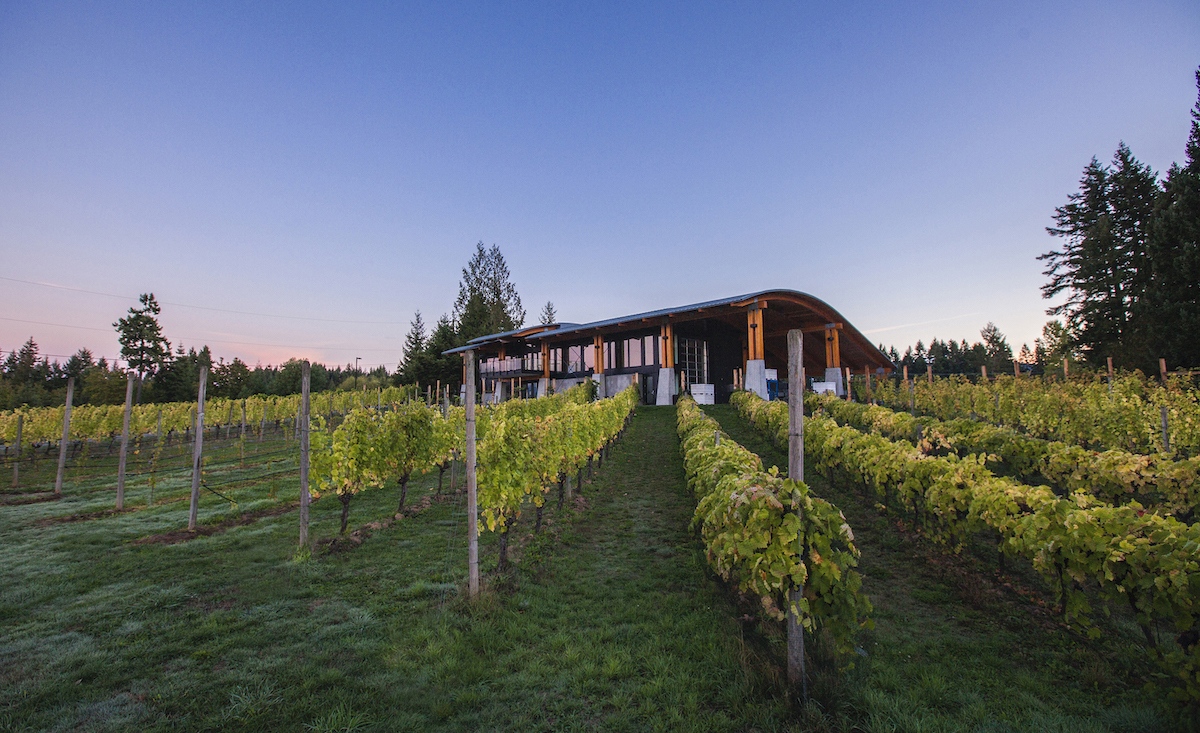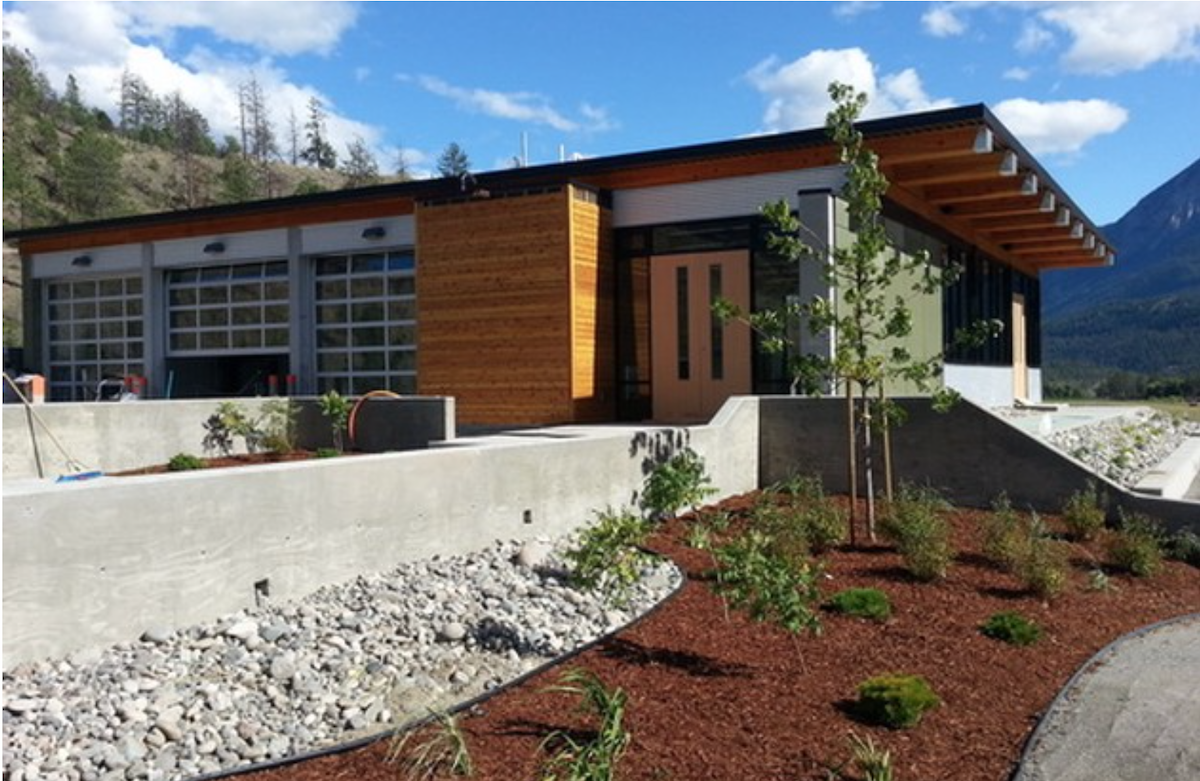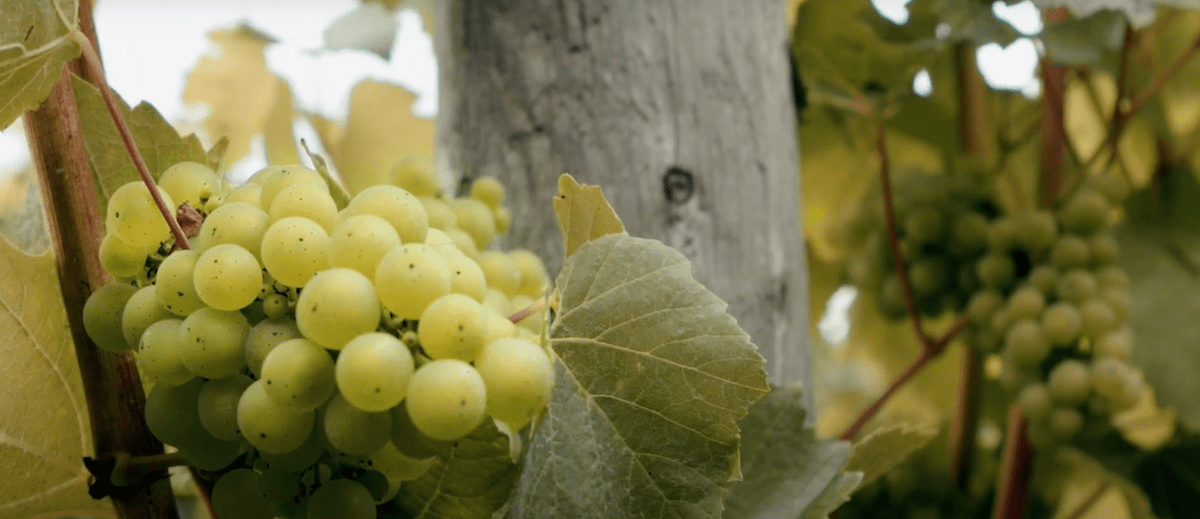Vancouver Island has a wine-growing history that spans over 40 years, but it is only in recent years that people have come to pay attention. Grapes grow from Victoria in the south to Comox halfway up the island. Growers have dialled into what varieties grow best in their area and have adapted viticulture practices to focus on quality over quantity.
One of the early pioneers was Blue Grouse in the Cowichan Valley, near Duncan. Now under its third ownership, Blue Grouse is one of the most popular tourist destinations for BC wine lovers.
This region has so much going for it. The Cowichan Valley has a warm, summer Mediterranean climate, similar to Oregon’s Willamette Valley. Its latitude of 48.5° N is virtually the same as such famous French wine regions as Romanée-Conti (47°N) (Burgundy) and Dom Perignon (Champagne) at 49° N. Its climate is less extreme than the Okanagan. As winemaker Bailey Williamson says, “It is important that we take what our terroir gives us rather than trying to force the terroir to give us what we want.” To that end, they have done extensive work to determine exactly what varieties are best suited to their site.
Added to this is their commitment to sustainable practices and their commitment to leave the land better then they found it. To this end (from the winery):
- Our parking lot pond was constructed to collect the runoff from our building and provide water for irrigation. It has become a thriving riparian zone teeming with wildlife – birds, insects, snakes and frogs live there.
- Blue Grouse has set aside a 10-acre Nature Reserve around Patrolas Creek, which traverses our property. It is home to many plant, mammal, bird, reptilian and insect species. Furthermore, in partnership with Lenora Bees, we are home to more than 30 beehives that help pollinate our plants and those of our neighbours. The biodiversity at Blue Grouse is beneficial for our vineyard and the community as a whole.
- Our potable water is drawn from an on-site well. After use, winery and domestic wastewater are processed through a series of in-ground bioreactors. These serve to adjust the pH, aerate, and filter the water prior to returning it to the aquifer. However, we don’t stop there. Our roads and parking areas are not paved in order to aid water conservation. This allows between 5% and 10% of rainwater to soak into the ground and help recharge our aquifer rather than make its way to the Pacific Ocean.
- Blue Grouse sources locally to the extent possible. Most of the building materials used to construct our tasting room and crush pad were from British Columbia. This supports the local economy and reduces our transportation footprint.
- The tasting room is illuminated by the thoughtful placement of windows that keep the heat from the sun out during summer and allow it to naturally warm the concrete floor throughout the winter. The barrel and sparkling wine rooms are underground to take advantage of the earth’s natural cooling potential, moderate temperature fluctuations and reduce the need for mechanical cooling. Mechanical systems capture unused energy from heating and cooling to increase efficiency and our lighting is controlled by room occupancy sensors to save electricity.
- Our heating and cooling are provided by an in-ground geothermal loop that transfers energy back and forth from Mother Earth to our building. Our wine tanks and concrete floor are hooked into this system.
- One of the alternatives to artificial soil correction is cover crops grown around the vines. These plants are selected to improve soil characteristics, prevent erosion and provide nutrients. Healthy soil is the key to healthy vines and high-quality fruit.
- All winery and vineyard waste (grape skins, stems, seeds, and pruned vines) is collected, composted (in situ or separately) and returned to the soil as organic fertilizer.
- Due to its weight, and the need for long-distance transportation, the bottle is a winery’s single biggest greenhouse gas (GHG) contributor. We are addressing this problem by using recycled Eco Glass. Eco Glass uses 25% less glass than a typical wine bottle. It weighs less requiring less fuel to transport it and produces less carbon dioxide in its manufacture. We source our bottles in the Pacific Northwest and sell most of them within a 100-kilometre radius of our winery further reducing that GHG footprint.
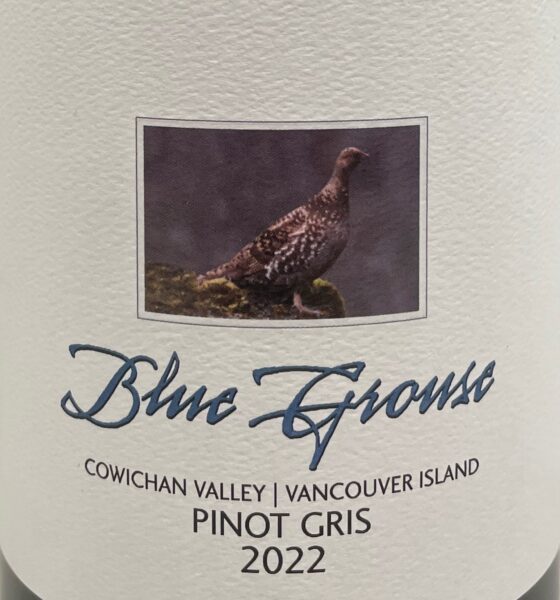
2022 Pinot Gris
12.5% ABV
$29.99
Blue Grouse has made a name for itself with this grape. Straw coloured with medium-light intensity. The nose shows aromas of pear, juicy apple, and lemon zest, with undertones of hay and honeysuckle. Good balance with nice texture. Pear, peach, citrus, and apple on the palate followed by a medium-plus finish with flavours lingering. This wine is rather elegant and a very versatile food wine. Serve with white fish, Thai dishes, roasted chicken, clam linguini, prawns and scallops, baked ham, or pork tenderloin with apples.
91+ points
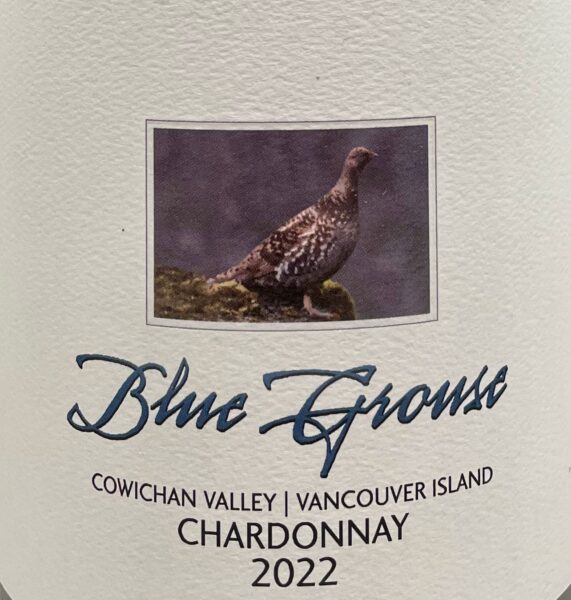
2022 Chardonnay
12.5% ABV
$30.99
Straw coloured with medium-light intensity. An inviting nose of baked apples, Meyer lemons, bramble, grapefruit, lime, honey, and almond. Good balance with medium-plus body. Coconut milk, banana, and tropical fruit flavours on the palate followed by a medium-plus finish. This would pair nicely with salmon, chicken curry, or balsamic glazed pork tenderloin.
89 points
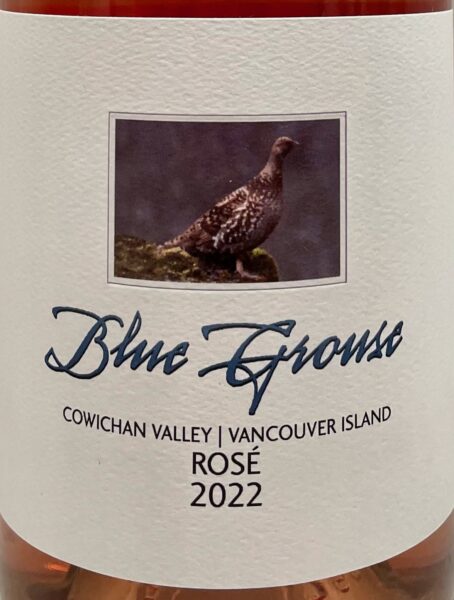
2022 Rosé
12.0% ABV
$27.99
Queen Anne cherry red with medium-minus intensity. Cherry, crisp red apple, ripe strawberry, spice, cranberry, raspberry, and rhubarb on the nose. Very good balance with good mouth-feel. The flavours echo the nose followed by a medium-long finish. Again, a very versatile food wine. Think of salmon, turkey, ham, or a charcuterie platter. Also, a lovely wine to greet guests when they drop over.
90+ points
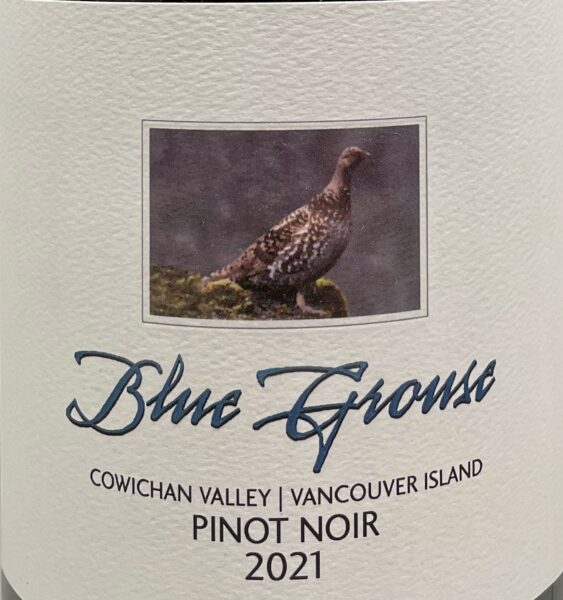
2021 Pinot Noir
12.5% ABV
$38.99
Garnet red with medium-minus intensity. The nose is pleasant with aromas of perfume, cherries, cinnamon, dried flowers, black tea, and prunes. Good balance with medium-light body. Pleasing flavours on the palate followed by a medium-plus finish. Serve this lighter-style pinot noir slightly chilled with salmon, charcuterie, beef stroganoff, or a beef stew.
89 points
(All photos – Sam Hauck)

